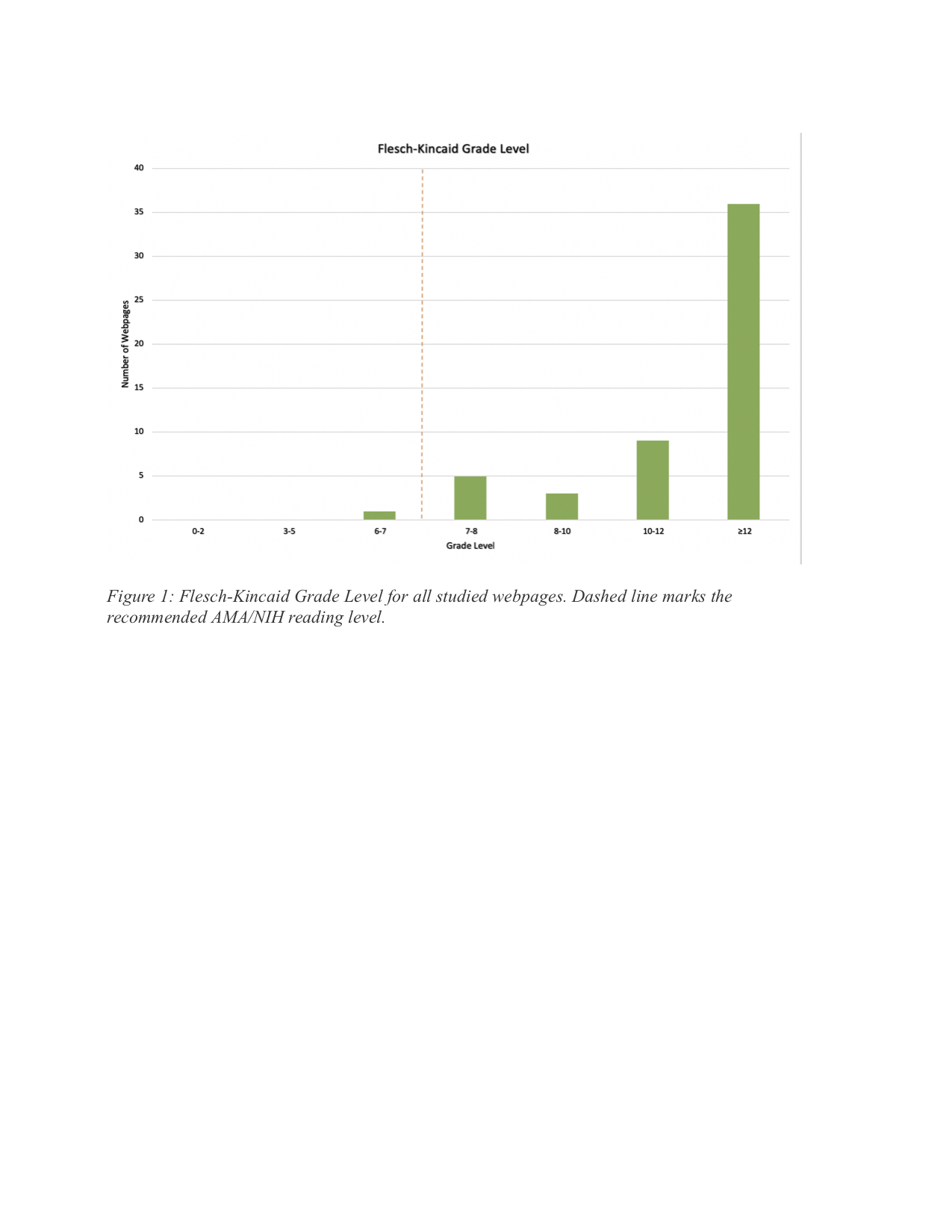Content and Readability of Robotic and Laparoscopic Sacrocolpopexy Information Online
Remington Lim, B.A.1, Joanna Wang, M.D.2, Liz Wang, M.D.2, Linda Ng, M.D.2, Shaun Wason, M.D.2, David Wang, M.D.2.
1Boston University School of Medicine, Boston, MA, USA, 2Boston Medical Center, Boston, MA, USA.
Background: Apical pelvic organ prolapse (POP) is a common condition that impacts women, with up to 18% of affected women receiving surgical intervention. Currently, sacrocolpopexy is considered the gold standard surgical treatment. With recent advances in laparoscopic and robotic techniques, many institutions offer this minimally invasive approach as the preferred treatment modality. In today’s digital era with the emergence of telehealth amidst the Covid-19 pandemic, many look to the internet for medical information. In an unregulated webspace, people may experience difficulties searching for and understanding information online. In this study, the content and readability of select internet pages describing robotic and laparoscopic sacrocolpopexy were evaluated.
Methods: Using an online keyword planner, the phrases “robotic sacrocolpopexy” and “laparoscopic sacrocolpopexy” were determined to be the most popular search terms. These terms were systematically browsed in Incognito mode in three of the most popular web search engines: Google, Yahoo, and Bing. Links that were non-text primary, duplicate, irrelevant, and non-English were excluded. Flesch-Kincaid Grade Level and Flesch-Kincaid Reading Ease indices were used to assess readability. These scores were analyzed using a one-way ANOVA on ranks.
Results: Of 300 total results, 54 unique sites were analyzed. 18 (33.3%) of these sources were private practice, 16 (29.6%) academic, and 7 (13.0%) non-academic. There were 26 (48.1%) obstetric/gynecologic-specific sites, 6 (14.8%) urology-specific sites, and 19 (35.2%) specialty-unspecified sites. The average readability of all sites was 12.9, requiring at least a 12th grade reading level, which is significantly higher than the recommended AMA/NIH level of 7th grade or below. 53 (98.1%) sites were above the recommended 7th grade reading level. 36 (66.7%) sites were written at the 12th grade level or higher. Only 8 (14.8%) were written below a high school reading level of 9.0. There was no significant difference between mean grade level or reading ease score from the type of web source (p=0.32 and 0.34, respectively), approach of surgery (p=0.91, 0.70), or specialty (p=0.48, 0.36).
Conclusions: Despite the internet’s accessibility and breadth of information, navigating online resources may be challenging for a patient considering surgical management of apical POP with sacrocolpopexy. Our study shows almost all websites require at least a high school education to properly comprehend, regardless of source or specialty. Additionally, gynecologic sources outnumber those of urology, which aligns with previous studies demonstrating gynecologists perform a greater proportion of sacrocolpopexies. It is important that providers be aware of available resources, so they may direct patients to specific sites that are personally validated or provide in-office materials at an appropriate reading level.
| Source | Number of Sites | Average Grade Level | Average Reading Ease |
| Private Practice | 18 | 13.8 | 30.6 |
| Academic | 16 | 11.9 | 39.0 |
| Non-Academic | 7 | 11.1 | 44.1 |
| Health | 6 | 14.1 | 32.0 |
| Government | 5 | 12.8 | 41.3 |
| Industrial | 2 | 16.7 | 38.1 |
| Obstetrics/Gynecology | 26 | 13.1 | 35.2 |
| Urology | 8 | 13.8 | 30.8 |
| Unspecified | 19 | 12.0 | 40.6 |

Back to 2021 Abstracts
